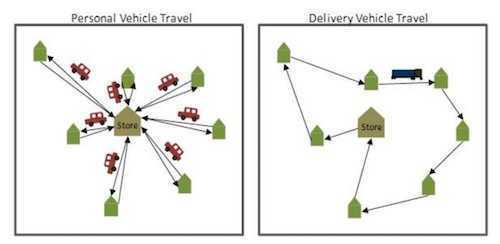Shop Online vs. In-store: The Differences and the Winner
The necessity of having a web-based storefront is one of the most important things that brick-and-mortar shops can take away from the present state of the economy. During the recent shutdown, businesses that were able to continue selling their wares and services online fared far better than those that were unable to do so. The significance of electronic commerce will continue into the next decade and beyond, with global sales of goods purchased online forecasted to reach about 5 trillion dollars by the year 2021. In addition, by the year 2040, the majority of people will conduct most of their shopping online. After we have proven the significance of online business, the next step is to investigate the many benefits associated with it.
Online shopping vs. in-store shopping: benefits and drawbacks
Both shopping online and in-store provides benefits that are beneficial to both shoppers and sellers. Let's examine a few of them. Benefits of online stores:
- Constant accessibility: unlike in-store establishments, which have set business hours, e-commerce websites are accessible at all times from anywhere.
- Consumers may choose to purchase right away and have their items delivered the next day. Convenience: Instead of driving to the store and dealing with traffic and long lines at the checkout counter, customers may purchase from the comfort of their own homes.
- The buyer may compare and contrast goods from several websites and purchase whatever appeals to them the most. You can do this right away without needing to visit many stores.
- Broader consumer reach: retailers may connect with clients outside of their geographic region. 2.14 billion people will purchase online by 2021, so if you own an e-commerce site, you may increase your market share.
- Lower costs: Rent, personnel salaries, supply purchases, and many other overhead expenses are huge when operating a brick-and-mortar shop. You may save money by using an online retailer.
The benefits of in-store stores include the following:
- Tangible component: customers may touch and experiment with the products physically, which increases their trust in the purchase.
- Instant accessibility: The customer can start using the products as soon as they pay for them.
- The experience: A lot of individuals love visiting various stores to look at various products. They like the pleasure this gives them.
- Delivery Costs: Although some online merchants provide free delivery, others do not, and buyers do not wish to pay additional charges.
- Less likelihood of returns: since some items, like clothing and makeup, demand a perfect fit, it can be challenging to choose the right one without trying it on first.
We can determine why shopping in person is preferable to shopping online by considering the points mentioned above
After comparing the advantages of online and offline shopping, let's look at how businesses could indeed combine the two activities to benefit from both physical store and online store trends.
Take advantage of both worlds
Nowadays, the similarity between online and in-store businesses is that in-store businesses also have an online presence; however, for the smaller ones, the benefits of moving to e-commerce are much less clear. In actuality, just 28% of small firms sell online, according to recent Forbes research. You are not required to launch a fully functional e-commerce website right away, however. To get your foot in the door, you may first create an eBay shop or sell on Amazon like a third party.
This will at the very least give you a presence online that you can utilize to begin luring in new clients. Speaking of attracting new clients, you must also keep them coming back for additional purchases. To put it another way, you must begin establishing enduring connections with them. This is accomplished at a physical store by offering a large assortment of goods, providing outstanding customer service, or rewarding patrons for their business. Creating an e-commerce application solution for your business, can all be done online. Additionally, you will benefit from contacting potential clients abroad or those who may not be familiar with your businesses.
Profitability of internet vs. traditional in-store businesses
Online shopping vs. physical shopping statistics shows that e-commerce is by far the victor in this case. First of all, until 2023, internet sales are predicted to expand by 14.8% annually, while brick-and-mortar store sales will only grow by 1.9%. The financial benefits of e-commerce become much more obvious if we broaden our perspective and include global retail sales. Global retail e-commerce totaled $3.53 trillion in 2016; during the following two years, this figure is predicted to nearly triple to $6.54 trillion.
Take advantage of technology to improve online shopping
When we previously compared the benefits of in-store businesses to those of e-commerce, we discovered that retail stores always had certain advantages. However, with the aid of technology, e-commerce websites can provide the same experiences. For instance, Cosmia, a retailer of cosmetics, uses AR software to enable online sales of their goods. Customers may explore the inventory on their phones, try on particular products, and try on ready-made outfits. Using the front-facing camera, the program applies cosmetics to the user's face as if they were in a store. Many firms do not need customers to choose between conventional and online buying.
Both may bring in money while giving your clients the finest experiences. While some may be on the fence about getting into e-commerce and weighing the benefits and drawbacks of online shopping, it is obvious based on all of the statistical data above that this technique is expected to grow over the next few years and beyond because it offers far more advantages than simply owning a physical store.



![Top Reasons To Have SEO Plan For Every Dubai Business [2025 Update]](/thumnails/blog/2024/11/1732278589.jpg)















